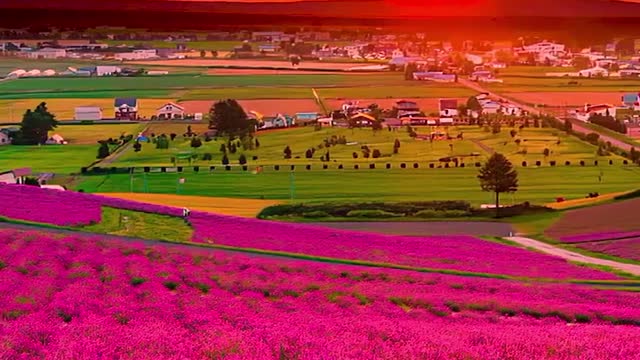Premium Only Content

Flowers
Open main menu
Wikipedia
Search
Play your part! Take part in an open contest to find the sound of all human knowledge – a sound logo for all Wikimedia projects.
Enter now
[Help with translations!]
Flower
Article Talk
Language
Download PDF
Watch
Edit
For other uses, see Flower (disambiguation).
"Floral" redirects here. For other uses, see Floral (disambiguation).
A flower, sometimes known as a bloom or blossom, is the reproductive structure found in flowering plants (plants of the division Angiospermae). The biological function of a flower is to facilitate reproduction, usually by providing a mechanism for the union of sperm with eggs. Flowers may facilitate outcrossing (fusion of sperm and eggs from different individuals in a population) resulting from cross-pollination or allow selfing (fusion of sperm and egg from the same flower) when self-pollination occurs.
Flowers or clusters of flowers produced by twelve species of Angiosperms from different families.
Selection of differently constructed flowers at different stages of vascular plant development
There are two types of pollination: self-pollination and cross-pollination. Self-pollination occurs when the pollen from the anther is deposited on the stigma of the same flower, or another flower on the same plant. Cross-pollination is when pollen is transferred from the anther of one flower to the stigma of another flower on a different individual of the same species. Self-pollination happens in flowers where the stamen and carpel mature at the same time, and are positioned so that the pollen can land on the flower's stigma. This pollination does not require an investment from the plant to provide nectar and pollen as food for pollinators.[1]
Some flowers produce diaspores without fertilization (parthenocarpy). Flowers contain sporangia and are the site where gametophytes develop.
Many flowers have evolved to be attractive to animals, so as to cause them to be vectors for the transfer of pollen. After fertilization, the ovary of the flower develops into fruit containing seeds.
In addition to facilitating the reproduction of flowering plants, flowers have long been admired and used by humans to bring beauty to the environment, and also as objects of romance, ritual, esotericism, witchcraft, religion, holistic medicine, and as a source of food.
Etymology
Morphology
Development
Function
Pollination
Fertilization
Seed development
Fruit development
Seed dispersal
Evolution
Colour
Classical taxonomy
Symbolism
Human use
See also
Notes
References
Further reading
External links
Last edited 1 day ago by Maye Fernandez
Wikipedia
Content is available under CC BY-SA 3.0 unless otherwise noted.
Privacy policy Terms of UseDesktop
-
 0:05
0:05
Kavindavishwanath
2 years agoFlowers beautiful
2 -
 49:02
49:02
The White House
2 hours agoPresident Trump and the Governor of Louisiana Deliver Remarks
22.4K9 -
 15:39
15:39
T-SPLY
4 hours agoDemocrats Are Shocked to Find Out Americans Want Deportations
4020 -
 1:02:58
1:02:58
Kyle Fortch
6 hours agoHeather Richardson: Proving Yourself As a Female On Tour, Netflix Secrets | THE ONE SHEET S1E9
91 -
 1:03:19
1:03:19
Timcast
3 hours agoMan DRIVES CAR Into Tesla Protesters, ARRESTED & Charged, DOJ THREATENS Arrestsc VIOLENCE Escalates
300K320 -
 43:33
43:33
CryptoWendyO
1 hour ago $0.68 earnedPREPARE FOR XRP’S NEXT BIG MOVE (3 HUGE ANNOUNCEMENTS)
10.1K1 -
 1:53:30
1:53:30
Steven Crowder
6 hours agoHow Rogue Judges Are Destroying MAGA & How Trump Can Stop Them
552K390 -
 1:30:41
1:30:41
Benny Johnson
4 hours ago🚨PANIC: DOJ Moves To LOCK-UP The Squad! Terrorism Charges For Libs | Snow White BOMBS, Trump Curse
110K164 -
 1:08:49
1:08:49
Flyover Conservatives
14 hours agoSchumer, Newsom, AOC & Bernie: Is this the Collapse of the Democrat Party?; Economic Update - Dr. Kirk Elliott | FOC Show
50.2K3 -
 2:53:41
2:53:41
The Dana Show with Dana Loesch
3 hours agoTAMPON TIM WALKS BACK TESLA COMMENTS | The Dana Show LIVE on Rumble!
42.9K3